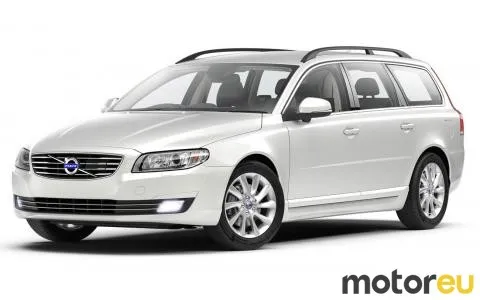
MAKES
-
 Abarth
Abarth
-
 Acura
Acura
-
 Alfa Romeo
Alfa Romeo
-
 Aston Martin
Aston Martin
-
 Audi
Audi
-
 Bentley
Bentley
-
 BMW
BMW
-
 Bugatti
Bugatti
-
 Buick
Buick
-
 BYD
BYD
-
 Cadillac
Cadillac
-
 Chery
Chery
-
 Chevrolet
Chevrolet
-
 Chrysler
Chrysler
-
 Citroen
Citroen
-
 Cupra
Cupra
-
 Dacia
Dacia
-
 Daewoo
Daewoo
-
 DAF
DAF
-
 Daihatsu
Daihatsu
-
 Datsun
Datsun
-
 De Lorean
De Lorean
-
 DFSK
DFSK
-
 Dodge
Dodge
-
 DS
DS
-
 Ferrari
Ferrari
-
 Fiat
Fiat
-
 Fisker
Fisker
-
 Ford
Ford
-
 GAZ
GAZ
-
 Geely
Geely
-
 Genesis
Genesis
-
 GMC
GMC
-
 Great Wall
Great Wall
-
 Hennessey
Hennessey
-
 Honda
Honda
-
 Hummer
Hummer
-
 Hyundai
Hyundai
-
 Infiniti
Infiniti
-
 Isuzu
Isuzu
-
 Iveco
Iveco
-
 Jaguar
Jaguar
-
 Jeep
Jeep
-
 Kia
Kia
-
 Koenigsegg
Koenigsegg
-
 Lada
Lada
-
 Lamborghini
Lamborghini
-
 Lancia
Lancia
-
 Land Rover
Land Rover
-
 Lexus
Lexus
-
 Lincoln
Lincoln
-
 Lotus
Lotus
-
 Lucid
Lucid
-
 Mahindra
Mahindra
-
 Maserati
Maserati
-
 Mazda
Mazda
-
 McLaren
McLaren
-
 Mercedes
Mercedes
-
 MG
MG
-
 Mini
Mini
-
 Mitsubishi
Mitsubishi
-
 Morgan
Morgan
-
 NIO
NIO
-
 Nissan
Nissan
-
 Opel
Opel
-
 Pagani
Pagani
-
 Peugeot
Peugeot
-
 Polestar
Polestar
-
 Pontiac
Pontiac
-
 Porsche
Porsche
-
 RAM
RAM
-
 Renault
Renault
-
 Rimac
Rimac
-
 Rivian
Rivian
-
 Rolls-Royce
Rolls-Royce
-
 Rover
Rover
-
 Saab
Saab
-
 Scion
Scion
-
 Seat
Seat
-
 Skoda
Skoda
-
 Smart
Smart
-
 Sony
Sony
-
 SsangYong
SsangYong
-
 Subaru
Subaru
-
 Suzuki
Suzuki
-
 Tata
Tata
-
 Tesla
Tesla
-
 Tofas
Tofas
-
 Toyota
Toyota
-
 Vauxhall
Vauxhall
-
 Volkswagen
Volkswagen
-
 Volvo
Volvo
-
 XPENG
XPENG
-
 Zenvo
Zenvo

Volvo > V70 III 2.4 D5 (215 Hp) WLTP, MPG, Fuel consumption

Year 2013- 2014- 2015- 2016
Engine 2400 cm3
Power 215 hp
Torque 440 Nm
Gearbox Automatical
Fuel Type Diesel
Fuel Tank 70 Liter (18 gal)
|
|
6,2 lt/100km 45 MPG (UK) - 38 MPG (US) |
|
|
164,0 g/100km |
|
|
9 lt/100km 31 MPG (UK) - 26 MPG (US) |
|
|
103,46 £ 120,47 € |
|
|
|

Volvo V70 III 2.4 D5 (215 Hp)
Technical Specs
- Number of clynders 5
- Number of valves 4x5
- Power 215 hp
- Max output (P) 4000 rpm
- Torque 440 Nm
- Max output (T) 1500
- Wheel drive Front wheel drive
- Number of doors 5
- Number of seats 5
- Tire size front -
- Tire size rear -

Volvo V70 III 2.4 D5 (215 Hp)
Dimensions and Weight
- Body type Station wagon (estate)
- Length 4814 mm
- Width 1907 mm
- Height 1547 mm
- Wheelbase 2816 mm
- Turning Circle 11.7 m
- Trunk Volume 555 liter
- Weight (Empty) -
- Total load weight -
- Loading capacity -
- Roof load -
Volvo V70 III 2.4 D5 Review
2016 Volvo V70 III 2.4’s production started in 2013 and continued in 2013, 2014, 2015 and 2016. V70 2.4 D5 is a 5 doors Station wagon (estate) in All wheel drive (4x4). Automobile weight is 0 kg with 555 liters trunk loading capacity. V70 III 2.4 D5 has a 2.4 l engine. With 2400 cc engine size it produces 215 Hp horsepower and 440 Nm torque. The power is transmitted by a speed gearbox with Front wheel drive wheel drive. Vehicle can accelerate from zero to 100 km/h (60 mph) in 8 seconds. Top speed is limited by 220 km/h (137 mph). The engine has a standard. Fuel tank capacity is 70 liters. Consumption in city is 0,0 lt/100km, consumption in highway is 0,0 lt/100km and combined fuel consumption is 6,2 lt/100km according to official factory data. Estimated V70 III 2.4 D5 real World MPG/consumption is 9,1 lt/100km. It is expected to consume 47 percent more fuel than factory data in real conditions and during test drives.
Comments
Be the first to comment...